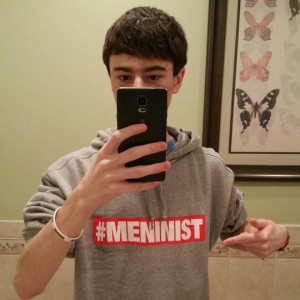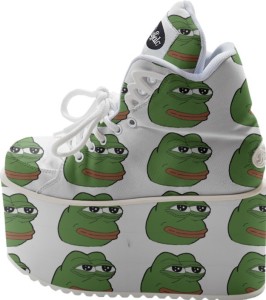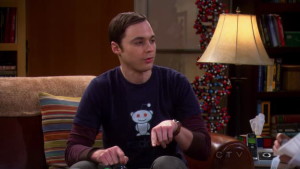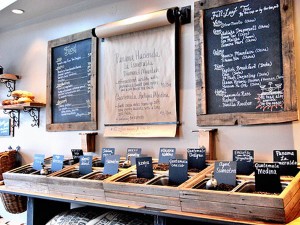There is nothing new about brands using counterculture trends as a way to revamp their images, create fresh takes on their products, and reach out to new groups of consumers. In the 1990’s many brands created hip, edgy, and subversive ad campaigns for their products that were consistent with the counterculture movements of the time (Klein, 2010). “Cool hunters” were employed to seek out youth trends to integrate into their brands or to aggressively market their brands in known trend-setting communities, and did this with resounding success (Klein, 2010). Brands were able to reach youth markets with ironic kitsch, genderless fragrances, fashionable nihilism, and revolutionary aesthetics (Klein, 2010). Today’s youth culture bears notable resemblances, many of which are self-aware and nostalgic, to the 1990’s: irony, individualism, identity politics, and postmodernity are once again all the rage (Zeisler, 2016). This raises the question, should brands repeat history by adopting the practices that made them successful in youth markets during the 90’s, or do the most cutting-edge spaces in today’s youth culture come with new challenges?
The Nature of Contemporary Counterculture Spaces
Before discussing what today’s counterculture spaces are like and how brands ought to approach them, it would be useful to give a rough definition as to what they are: when this article talks about contemporary counterculture spaces it refers to numerous loosely connected communities that consciously deviate from and oppose the dominant cultural norms. No single movement makes it up, but rather it might be thought of as a river with many currents. Today’s counterculture spaces are shaped by Millennials and, increasingly, Generation Z. While they have a lot in common with their predecessors in the 90’s, the cultural landscape also has some differences. The most apparent difference is technological: while the counterculture spaces of the 90’s dwelled in zines, underground concerts, and culture jamming groups (Zeisler, 2016), today’s counterculture movements also have a large presence in online communities. The digital presence of these spaces creates both opportunities and challenges for brands.
Some online spaces with heavy currents of counterculture include Tumblr’s social justice community, Anonymous, Reddit’s various “subreddit” forums, -Chan sites, and “Weird Facebook.” Every one of these spaces has its own culture, worldview, and basis for inclusion and exclusion (all of which differ quite radically from eachother’s). These communities are challenges for brands because they create their own content quite prolifically, which reduces the demand for branded content. Additionally, some tend to be averse to large, impersonal institutions such as brands. It might be tempting for brands to forget about them entirely, but that would be in error; the members of these communities, and thus fit the psychological profile of the most brand loyal consumer if they can be reached (Kay, 2005; Peretti, 1996).


 Motifs from online counterculture communities integrated into fashion statements.
Motifs from online counterculture communities integrated into fashion statements.
Anti-Establishment Attitudes and Brand Aversion
The primary challenge brands face if they are interested in penetrating counterculture markets is the anti-establishment attitude that both permeates and characterizes these markets. Like their predecessors in the 90’s, members of today’s counterculture circles are consciously hesitant to warm up to brands (Klein, 2010). The stratified disparities in wealth in the Anglophone world are known to be conducive to a climate of anti-establishment attitudes (Kapur, Macleod & Singh, 2005) which likely exacerbates the distrust towards brands across society, and especially in its more defiant subcultures, so there is likely not very much that can be done to change these attitudes. The brand aversion among contemporary counterculture movements is evidenced by the outrage generated whenever a relatively popular brand openly notices some aspect of these groups’ cultures. For instance, popular news outlet The Daily Dot has found itself at odds with a number of online counterculture communities for allegedly “stealing” or “killing” the memes that they circulate amongst themselves; this conflict has led to responses such as change.org petitions to make The Daily Dot stop writing articles about memes, among other surprisingly intense reactions. Buzzfeed has also found itself subjected to similar kinds of resistance (“Buzzfeed,” 2015).

Popular TV Series The Big Bang Theory uses imagery from Reddit, amusing regular viewers but most likely annoying active Reddit users.
Courting Counterculture: Lessons from the Past
One well known way in which to capitalize on counterculture trends is to bring them into the mainstream for a wide audience, but that is insufficient to reach the consumers who are part of counterculture circles before they become mainstream. As previously stated, mainstreaming counterculture seems to alienate such consumers from the trends that they started. In the 90’s brands were cognizant of that and, in order to target the more dedicated members of counterculture circles, would sponsor their events while maintaining enough distance not to interfere too much with the product, itself (Klein, 2010). Likewise, other brands have made products that look independent (or silently bought out independent brands) in order to draw in brand-phobic consumers (Kell, 2015; Oppmann, 2010). Today it seems that brands succeed when they sponsor counterculture content without “stealing” it, as well. Many of the most successful meme pages on Facebook are, unbeknownst to most of their audiences, sponsored. Ultimately the best ways in which brands should market to counterculture markets is to downplay the fact that they are brands, and to stick to very specific kinds of targeting. Otherwise they run the risk of generating animosity among these groups.

15th Ave. Coffee and Tea, an artsy unbranded coffee shop owned by Starbucks marketed towards consumers who are averse to Starbucks’s chain stores.
References:
Buzzfeed. (2015). Retrieved from http://knowyourmeme.com/memes/sites/buzzfeed
Kapur, A., Macleod, N., Singh, N. (2005). Plutonomy: buying luxury, explaining global imbalances. Citigroup. Retrieved from: http://delong.typepad.com/plutonomy-1.pdf
Kay, M. J. (2005) Strong brands and corporate brands. European Journal of Marketing, 40, 742-760.
Kell, J. (2015) Coke invests in fast growing organic juice maker Suja. Fortune. Retrieved from http://fortune.com/2015/08/19/coca-cola-investment-suju-juice/
Klein, N. (2010). No Logo: 10th Anniversary Edition. New York, NY: Picador.
Oppmann, P. (2010) I spy a ‘stealth Starbucks’. CNN. Retrieved from http://www.cnn.com/2010/LIVING/wayoflife/01/06/i.spy.stealth.starbucks/
Peretti, J. (1996) Capitalism and schizophrenia: contemporary visual culture and the acceleration of identity formation/dissolution. Negations. Retrieved from: http://www.datawranglers.com/negations/issues/96w/96w_peretti.html
Zeisler, A. (2016) We Were Feminists Once: From Riot Grrrl to CoverGirl, the Buying and Selling of a Political Movement. New York, NY: Public Affairs.

3 Responses to Counterculture Spaces in the Digital Era: Untapped Markets or “No Brand’s Land”?